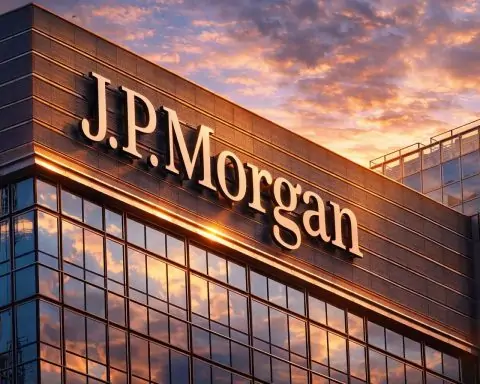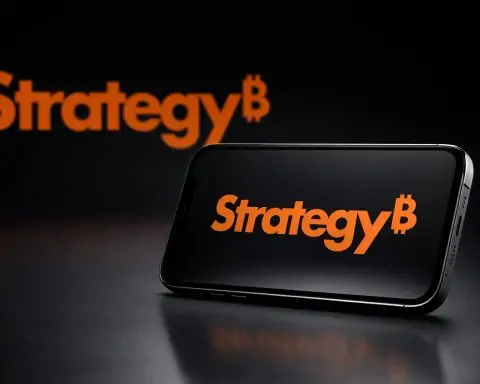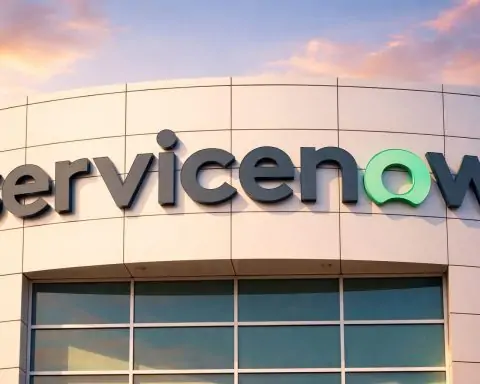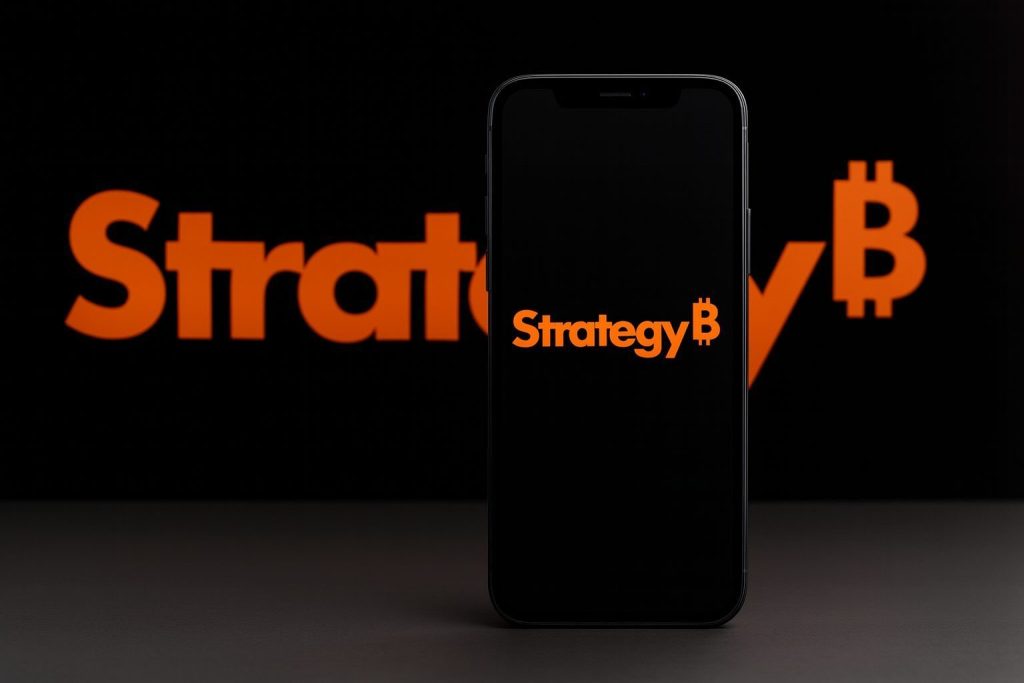INDIANAPOLIS — November 25, 2025 — Eli Lilly and Company (NYSE: LLY) continued its remarkable run on Tuesday, as the first-ever $1 trillion pharmaceutical company saw its stock climb again on the back of fresh analyst upgrades, intensifying obesity-drug momentum and ongoing institutional and retail interest.
Eli Lilly stock price today (25 November 2025)
Eli Lilly shares closed around $1,092.4 on Tuesday, up just over 2% from Monday’s close near $1,070. That move extends a powerful multi-week rally and keeps the stock very close to its new 52‑week and all‑time high area around $1,095. [1]
According to recent price history data, today’s trading range sat roughly between $1,075 and $1,095, on volume of about 1.2 million shares, broadly in line with the stock’s average daily turnover. [2]
Over longer time frames, the trend is even more striking:
- Over the last three months, LLY has surged more than 50%, dramatically outperforming the SPDR S&P Pharmaceuticals ETF, which gained roughly 12–13% over the same period. [3]
- Year‑to‑date, the stock is up around 38–40%, with a 52‑week gain above 40%, cementing its leadership among large-cap pharma names. [4]
Analysts and data providers estimate Lilly’s current market value at about $1.0–1.1 trillion, a level typically reserved for mega‑cap technology giants. [5]
Key drivers behind today’s move
1. Bernstein lifts price target to $1,300 on orforglipron optimism
The main fresh catalyst this morning came from Bernstein SocGen Group, which raised its price target on Lilly from $1,100 to $1,300 while reiterating an Outperform rating. [6]
The firm highlighted:
- A “rich catalyst path” for the stock over the next year.
- A focus on orforglipron, Lilly’s once‑daily oral GLP‑1 obesity pill, as a major earnings driver from 2026 onward.
- A more bullish view on orforglipron sales than the Street: Bernstein now estimates $1.8 billion in 2026 sales, versus a current consensus nearer $550 million, based on expectations of approximately 80,000 weekly prescriptions in the U.S. oral obesity market. [7]
The upgrade also folds in the recently announced U.S. government GLP‑1 access deal, which Bernstein believes is more favorable to Eli Lilly than to rival Novo Nordisk, given Lilly’s product mix and launch timing. [8]
Other banks have raised their targets in recent weeks as well. MarketBeat’s summary of analyst actions notes:
- UBS boosted its target to $1,080.
- CICC Research raised to $1,060 with a neutral stance.
- JPMorgan upped its target to $1,150 with an overweight rating.
- BMO Capital Markets moved to $1,100 with an outperform rating. [9]
Consensus still sits lower, around $1,047–$1,050 per share, meaning LLY is now trading above the average analyst target even as some houses push their forecasts closer to the $1,200–$1,300 band. [10]
2. Follow‑through from the $1 trillion market‑cap milestone
Today’s gains also build on last week’s historic moment: Eli Lilly became the first drugmaker in history to reach a $1 trillion market capitalization, a level more commonly associated with tech bellwethers. [11]
Recent coverage from Reuters and other outlets has emphasized that:
- The rally has been driven largely by explosive demand for obesity and diabetes treatments, primarily Mounjaro (type 2 diabetes) and Zepbound (obesity). Combined, these tirzepatide‑based drugs now generate more than $10 billion in quarterly revenue, over half of Lilly’s total. [12]
- Wall Street sees the GLP‑1 weight‑loss market as a potential $150 billion opportunity by 2030, with Lilly and Novo Nordisk expected to dominate global sales. [13]
Multiple analyses today frame Lilly’s valuation as a sign of a structural shift: investors are starting to treat metabolic disease management—obesity and diabetes care—as a scalable “platform” business with technology‑like economics, rather than as a traditional cyclical pharma franchise. [14]
3. Institutional buying and “Magnificent Seven” rotation narrative
Another piece of news on November 25 highlighted renewed institutional appetite for LLY. A MarketBeat filing summary shows that Jefferies Financial Group increased its stake in Eli Lilly by about 36%, adding just over 2,100 shares to bring its total holding to roughly 8,128 shares, valued around $6.3 million. [15]
The same report notes that over 82% of Lilly’s float is held by institutions and hedge funds, underscoring how deeply embedded the stock now is in professional portfolios. [16]
In parallel, Reuters and other commentators have started framing Lilly as a potential alternative to over‑owned AI and “Magnificent Seven” names, given that obesity and diabetes drugs have fueled returns that rival the big tech leaders, but with arguably different macro sensitivities. [17]
4. Retail and Reddit interest in LLY as a “non‑AI growth” play
Retail sentiment is also part of today’s story. A fresh piece from Insider Monkey notes that Reddit investors are piling into Eli Lilly as one of their top “non‑AI” stocks ahead of a potential cooling in the AI trade. [18]
Key points from that coverage:
- LLY has become a favorite among growth‑focused retail traders who want exposure to secular themes but outside pure AI.
- Reddit discussions highlight Lilly’s diversified pipeline across oncology, immunology and neuroscience, which could help offset any future pricing pressure on GLP‑1 drugs.
- Some investors acknowledge the stock’s premium valuation, but argue that rapid revenue growth—around 45% over the last 12 months—justifies a higher multiple than peers. [19]
This narrative dovetails with institutional commentary from Deutsche Bank and others that Lilly is starting to resemble the “Magnificent Seven” in how it anchors growth‑oriented portfolios, even as AI valuations come under scrutiny. [20]
Fundamentals powering the rally: Q3 2025 earnings and guidance
Behind the headlines, the foundation of Lilly’s rally is extraordinarily strong fundamentals, especially in its incretin portfolio.
Q3 2025 by the numbers
In late October, Lilly reported third‑quarter 2025 results that blew past expectations: [21]
- Revenue: $17.6 billion, up 54% year‑on‑year.
- Volume: up 62%, while average realized prices fell about 10%, reflecting a deliberate strategy to expand access rather than raise prices.
- Non‑GAAP EPS:$7.02, versus about $1.18 a year earlier and well ahead of analyst estimates around $5.70.
- Key products:
- Mounjaro (diabetes) revenue more than doubled to about $6.5 billion in the quarter.
- Zepbound (obesity) revenue nearly tripled to around $3.6 billion. [22]
Management raised full‑year 2025 revenue guidance to $63.0–$63.5 billion (from $60–$62 billion), and adjusted EPS guidance to $23.00–$23.70, a meaningful uplift versus prior expectations. [23]
Volume over price: a new growth model for pharma
Both MarketBeat and Investing.com analyses today stress that Lilly’s growth is volume‑driven rather than price‑driven, an unusually consumer‑tech‑like pattern for a big pharmaceutical company: [24]
- Growth is coming from more patients on therapy, not from steep price increases.
- Lower realized prices, combined with broad payer and government agreements, help stabilize access and reduce political risk around drug pricing.
- Lilly estimates that its recent pricing strategy has expanded the addressable market significantly, especially in obesity, where out‑of‑pocket cost has been a major adoption barrier.
Obesity and diabetes leadership: Zepbound, Mounjaro and orforglipron
GLP‑1 medicines at the core
Lilly’s rally is inseparable from its leadership in GLP‑1‑based therapies, a drug class that has rapidly reshaped treatment of both diabetes and obesity.
The company’s incretin portfolio currently includes: [25]
- Mounjaro (tirzepatide) for type 2 diabetes.
- Zepbound (tirzepatide) for obesity and related indications.
- Experimental orforglipron, a once‑daily oral GLP‑1 pill for obesity and diabetes.
Phase 3 trials of orforglipron have shown significant weight‑loss efficacy, albeit slightly below the most aggressive expectations in at least one study, which initially caused some volatility. Even so, many investors and analysts still see it as a highly competitive oral option with substantial commercial potential. [26]
Government deal expands access and supports volume growth
On November 6, Lilly announced a high‑profile agreement with the U.S. Government to expand access to its obesity medicines and reduce patient out‑of‑pocket costs. [27]
Key elements include:
- Starting as early as April 1, 2026, Medicare beneficiaries with obesity or overweight will be able to access Zepbound and orforglipron (pending FDA approval) for no more than $50 per month.
- State Medicaid programs can opt into similar pricing, meaning tens of millions of additional covered lives.
- Direct‑to‑consumer pricing via Lilly’s own channels aims to keep monthly costs below prior cash‑pay levels for both injectable and oral GLP‑1 therapies.
In parallel, a GLP‑1 pipeline update from Prime Therapeutics confirms that orforglipron has received a Commissioner’s National Priority Voucher (CNPV), a pilot program that can shorten the FDA review window from roughly 10–12 months to about 1–2 months, in recognition of its public‑health significance and Lilly’s affordability commitments. [28]
This combination of accelerated regulatory review and broad payer support is a core reason why analysts like Bernstein see such a strong earnings trajectory in 2026 and beyond. [29]
Massive manufacturing investments as a competitive moat
To support this demand, Lilly has committed over $50 billion since 2020 to expand manufacturing capacity, including: [30]
- The LEAP Innovation District in Lebanon, Indiana.
- Newly announced facilities in Virginia and Texas.
- An expansion of its site in Puerto Rico.
Analysts argue that this scale‑up of high‑tech injectable and oral production is itself a major moat: rivals can develop competing molecules, but replicating Lilly’s manufacturing network and supply chain will take years and billions in capital.
Beyond obesity: pipeline depth in oncology and neuroscience
While GLP‑1 medicines dominate the headlines, today’s coverage also emphasizes that Lilly is far from a one‑product story. [31]
Highlights include:
- Kisunla (donanemab) for Alzheimer’s disease, which has secured approvals in multiple major markets and is being supported by updated labels and new data. [32]
- Jaypirca (pirtobrutinib) in hematologic cancers, where new data presented at the 2025 ASH meeting may move the drug into earlier‑line treatment settings. [33]
- Early neuroscience work with a newer incretin candidate, brenipatide, which Lilly believes has promising properties for neurological indications, initially being tested in alcohol and opioid use disorders. [34]
This broader pipeline helps underpin the view that even if obesity drug pricing pressures intensify, Lilly still has multiple shots on goal across oncology, neurology and immunology.
Valuation check: how expensive is LLY now?
With LLY trading just shy of record highs and above the average Street target, valuation is front and center in today’s commentary.
Different data providers quote slightly different multiples, but they all agree on one thing: Lilly is expensive versus typical pharma peers.
- MarketBeat data puts the trailing P/E ratio around the low 70s, with dividend yield near 0.55–0.6%. [35]
- A Simply Wall St analysis notes that Lilly’s P/E is roughly three times the U.S. market median, even after a big earnings jump, and highlights EPS growth of more than 100% year‑over‑year and over 200% across three years. [36]
- Barchart’s performance review shows the stock trading not only well above its 50‑day and 200‑day moving averages, but also above its mean price target of about $1,028.84, despite a consensus “Strong Buy” rating from 27 analysts. [37]
In short: Lilly is priced as a high‑growth, high‑quality compounder, not as a typical defensive healthcare stock. That leaves less room for error if growth slows or the GLP‑1 category becomes more commoditized than expected.
Competitive and policy risks to watch
Even on a strong day like today, investors and analysts are keenly aware of the risks that come with such a premium valuation.
1. Intensifying GLP‑1 competition
- Novo Nordisk continues to push aggressively with semaglutide‑based products, including potential new cardiovascular and heart‑failure indications, and has recently cut direct‑to‑consumer prices on Wegovy and Ozempic to better match Lilly’s Zepbound pricing. [38]
- More broadly, a growing list of biopharma players is advancing late‑stage GLP‑1 and dual‑agonist programs, increasing the risk of future price competition and market fragmentation. [39]
2. Regulatory and pricing pressure
The same White House and Medicare deals that open the door to tens of millions of additional patients also cap prices and compress margins relative to what pure cash‑pay markets might have delivered. Analysts broadly view this as a net positive because it expands the franchise and reduces political risk, but it does likely limit upside on per‑patient economics. [40]
3. Execution on oral GLP‑1 and manufacturing scale‑up
- Orforglipron still needs regulatory approval and a successful commercial launch; if safety, tolerability or efficacy underperform expectations in real‑world use, the stock could re‑rate lower. [41]
- The massive manufacturing build‑out must be executed without major delays, cost overruns or quality issues. High spending on capacity is a long‑term moat only if demand remains robust and sustainable. [42]
What today’s move means for investors
For now, the message from the market on November 25 is clear:
- Momentum is firmly intact. LLY is hitting new highs, outperforming major pharma peers and broader indices on the back of blockbuster GLP‑1 sales and bullish forward guidance. [43]
- Conviction is broad‑based. Institutional investors, Wall Street analysts and retail traders alike are leaning into the story, as evidenced by Jefferies’ increased stake, multiple price‑target hikes and rising Reddit interest. [44]
- Expectations are high. With the stock trading above consensus price targets and at one of the richest multiples in global healthcare, markets are effectively betting that Lilly can sustain double‑digit revenue and earnings growth well into the second half of the decade. [45]
For long‑term investors, the key questions now revolve around durability:
Can Eli Lilly maintain its lead in obesity and diabetes, execute on orforglipron and other pipeline assets, and continue to compound earnings fast enough to justify a trillion‑dollar valuation?
As of 25 November 2025, today’s price action suggests that, at least for now, the market’s answer is still “yes.”
References
1. www.investing.com, 2. www.investing.com, 3. markets.financialcontent.com, 4. markets.financialcontent.com, 5. www.marketbeat.com, 6. m.au.investing.com, 7. m.au.investing.com, 8. m.au.investing.com, 9. www.marketbeat.com, 10. markets.financialcontent.com, 11. www.marketbeat.com, 12. www.prnewswire.com, 13. www.reuters.com, 14. www.marketbeat.com, 15. www.marketbeat.com, 16. www.marketbeat.com, 17. www.reuters.com, 18. www.insidermonkey.com, 19. www.insidermonkey.com, 20. www.reuters.com, 21. www.prnewswire.com, 22. www.prnewswire.com, 23. www.prnewswire.com, 24. www.marketbeat.com, 25. www.prnewswire.com, 26. www.prnewswire.com, 27. www.drugs.com, 28. www.primetherapeutics.com, 29. m.au.investing.com, 30. www.marketbeat.com, 31. www.marketbeat.com, 32. www.labiotech.eu, 33. www.marketbeat.com, 34. www.biopharmadive.com, 35. www.marketbeat.com, 36. simplywall.st, 37. markets.financialcontent.com, 38. seekingalpha.com, 39. www.primetherapeutics.com, 40. www.drugs.com, 41. www.prnewswire.com, 42. www.marketbeat.com, 43. markets.financialcontent.com, 44. www.marketbeat.com, 45. www.marketbeat.com







